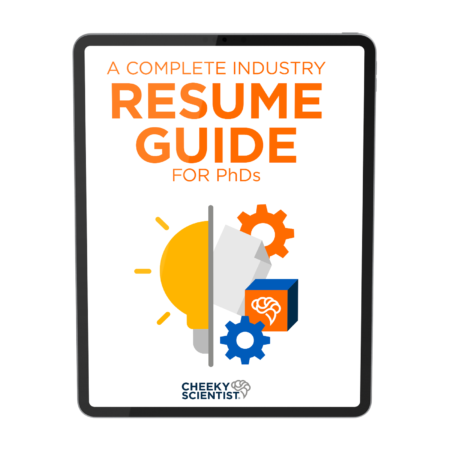4 Steps To Filing For Patents That PhDs Need To Know When Applying For Jobs

My first phone interview with an industry recruiter was a disaster.
I wasn’t prepared.
I didn’t know what to expect and had no idea how to build a relationship with a recruiter.
I didn’t know enough about the company, or business in general.
But, the job opening was at a company that I had always dreamed of working at, so I couldn’t pass up the opportunity.
The conversation began smoothly, but soon the talk became very technical in a way that I was not prepared for.
Liability, opportunity cost, value proposition, monetization… there were so many new words being thrown around, I just couldn’t keep up.
Was I supposed to know what he was talking about?
I muddled through, trying to guess how to respond, but needless to say, I did not get a second interview.
By not understanding these common business terms, I made myself look like a fool.
The skills I gained during my PhD were not going to get me a job in industry.
I needed to develop my transferable skills and learn about the current industry trends in the field I was interested in.
I needed to go into every interview better prepared.
So, I began researching topics that are important to businesses.
I began to improve my business acumen.
I educated myself in business development, general economics, mergers and acquisitions, corporate structure, and many other areas.
One topic that I found to be very useful as I developed my job search strategy, was understanding the patent process.
With a basic understanding of patents, I demonstrated that I knew how valuable the innovation happening at a company was, because I knew how this innovation was protected.
Why PhDs Must Understand How Companies File Patents
According to the World Intellectual Property Organization, there were 218,000 patent applications in 2015.
The immense cost of research and development makes protecting an invention with a patent very important in industry.
All companies, in all fields, are interested in protecting the inventions they develop.
Because once an invention is made public, its findings can be easily replicated by competitors, thus reducing the profit made by the original inventors.
Understanding the patent process becomes even more important for PhDs transitioning into the biotechnology or pharmaceutical industries.
As reported by Scientific American, the average cost to bring a new prescription drug to market is $2.6 billion.
That means each patent a pharmaceutical or biotechnology company files is potentially protecting a $2.6 billion investment.
It is of the utmost importance to industry that the inventions they create are protected.
In academia, you are worried about your research getting scooped, but the stakes are much higher in industry.
Demonstrate to a potential employer that, as a PhD job candidate with a solid knowledge of the patenting process, you truly understand the value of the company’s research.
The 4 Steps Of Filing A Patent In Industry
It is essential for companies in all industries to consistently develop new and unique products.
But once they have developed a product worth placing on the market, protection of the invention becomes a top priority.
Protecting a product with a patent ensures that competing companies cannot claim an idea or product as their own.
As an academic PhD, you understand the value of intellectual property, but the steps taken to protect this valuable information are more involved in industry.
Companies file patents to protect all areas of development.
By gaining an understanding of how and why companies file patents, you can demonstrate to a potential employer that you are a business savvy PhD.
The reality of securing a patent is involved and time consuming, but the general patenting process can be broken down into four steps…
1. Write the patent application.
Like any legal document, a patent has very specific sections and requirements that must be fulfilled.
The wording of the patent is essential to make sure that all areas of the invention are covered under the patent.
A basic patent consists of six parts: title, introduction, brief description, detailed description, claim, and declaration.
The title should identify the invention and the field that the invention pertains to.
The introduction should describe the field of the invention in more detail, provide an overview of the current state of knowledge in the field, and state the problem the invention intends to solve.
The brief description, or summary, should provide an overview of what the invention will accomplish and how this invention solves the problem outlined in the introduction.
The detailed description should cover all the relevant aspects of the invention and how the invention might be used.
The description requirements are different for different fields.
For example, for pharmaceutical inventions, special attention should be paid to describing the chemical structure of an invention, while for biologics, a description or drawing may not be sufficient and a physical sample should be placed into the appropriate depository.
The claim is the most important section of a patent application because it defines the scope of a patent’s protection.
The claim section is usually written in broad terms so that every aspect of the new invention is covered.
It is essential that the claim section is written well, because this section of the patent allows a patent owner to hold offending parties responsible for infringement.
Anyone who exploits an invention or the parts of an invention, as described in the claims section, is infringing on the rights of that patent and can be persecuted by the law.
The final part of an application is the declaration, or oath, which states that the applicant is the original inventor and the information provided in the patent application is true and correct.
2. File a patent application.
Once the patent application has been written, it needs to be filed with the U.S. Patent and Trademark Office.
The patent can be filed with the USPTO by mail or online.
However, according to U.S. law only the actual inventor, who is a natural person, can file a patent.
This means that a patent, and the invention it pertains to, must be attributed to a person.
A company can file a patent on an inventor’s behalf, provided that the inventor has assigned their patent rights to said company.
Your patent rights will usually be signed over to a company in your employment contract.
Additionally, if two or more companies are involved in a collaboration during the development of an invention, inventorship issues should be resolved prior to filing a patent.
3. Examination of the patent application.
After a patent application is submitted, the U.S. government will examine the patent to evaluate the novelty of the invention.
For a patent to be granted, an invention has to be new, or in patent terms, it should not form part of any ‘prior art.’
Prior art refers to any disclosure (written, oral, etc.) of the features of the invention as described in the claim section of the patent application that was published before the filing date of the application.
U.S. law allows a one-year grace period before the filing of a patent application, during which inventors can publish their invention without it being considered prior art.
The patent examiner will also evaluate whether the invention involves an ‘inventive step’.
To contain an inventive step, how an invention was created should not be obvious to a person with an ordinary level of skill in the field to which the invention belongs.
The inventive step is of particular importance in the field of pharmaceutical inventions.
Pharmaceutical companies often file secondary patents to protect any new developments they may make to the original invention in the main patent, such as, how they might chemically modify a drug.
Without these secondary patents, competing companies could potentially file their own patent and prevent the original company from adding any new features to their product.
The patent examination process is very long.
There is a backlog of patent applications and it is not uncommon for a patent to take more than two years to be approved.
However, once a patent has been approved it is valid for 20 years after the initial filing date.
4. Publish the patent application.
After a patent application has been filed, but mostly likely before it has been approved, it will be published publicly.
This publication process usually takes place 18 months after filing a patent application and its purpose is to inform the public that a particular invention has entered the patent protection process.
When the patent application is made public, other parties who may already be using the invention can take preventive measures so that they are not infringing on the patent.
Public patents are available in the Public Pair section of the USPTO website.
Before the publication of a patent, all of its contents are confidential.
If you’re ready to start your transition into industry, you can apply to book a free Transition Call with our founder Isaiah Hankel, PhD or one of our Transition Specialists. Apply to book a Transition Call here.

ABOUT ADITYA SHARMA, PHD
Aditya Sharma, PhD, earned his advanced degree at the University of Toronto, Canada. Now, he combines his passion for all things STEM with keen business acumen, and he works as a scientific consultant at a top Canadian consulting firm.
More Written by Aditya Sharma, PhD































